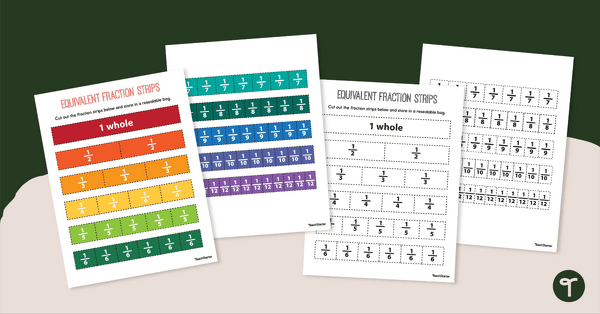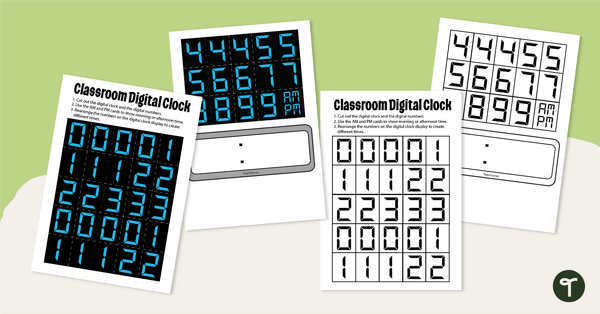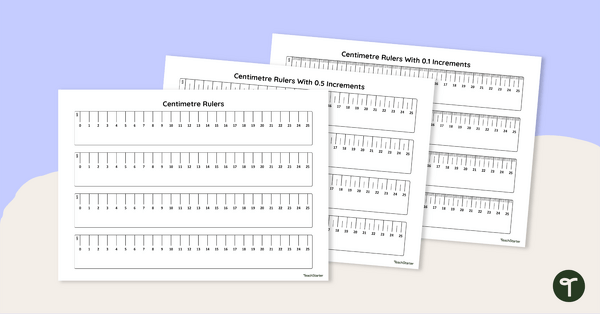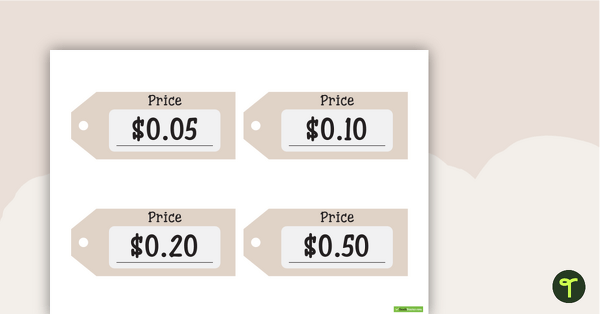Maths Manipulatives Teaching Resources
Explore printable and virtual maths manipulatives created by teachers to make your maths teaching journey a little bit easier this school year!
Are you looking to foster a deeper understanding of mathematical concepts and emphasise hands-on learning? Our teacher team has you covered!
From handy multiplication charts to printable protractors, this collection of teaching resources is stocked with everything you need to provide concrete experiences for your students that will complement the abstract mathematical ideas you're tackling each day.
Curious about getting the most out of the maths manipulatives in this collection? Read on for a primer from our teacher team, including a look at our best tips for storing all those manipulatives!
What Are Manipulatives in Maths?
Yes, we know it sounds obvious to many, but we had to start somewhere!
A maths manipulative is a concrete object that a learner can use to explore a mathematical concept in a hands-on way. Students literally manipulate these objects with their hands — hence the name!

These informal measurement rulers are a fun maths manipulative that help kids better understand the concept of measuring length.
Why Are Manipulatives Important in Maths?
Wondering if you really need to add even more things to your classroom that are going to take up space? Well ... yes ... manipulatives are important for your students to use, whether they're working in maths rotations or centres, guided maths groups or doing individual tasks.
Let's face it — if you had the choice between doing maths worksheets all day or getting to be more hands-on, which would you choose? Worksheets certainly have their place in maths education (it's why our teacher team creates engaging and interesting worksheets in the first place), but we can trace the use of manipulatives in maths education back throughout history to the work of various educational theorists and mathematicians.
And for good reason!
Manipulatives make learning maths more fun for kids, and these handy tools also give kids a way to bring these abstract concepts into the physical realm.
A Look at the History of Maths Manipulatives
Friedrich Froebel — the German educator best known for developing the concept of kindergarten in the early 19th century — was one of the earliest advocates of what we call manipulatives today.
Froebel believed kids should be encouraged to learn through play and exploration, using objects and materials to develop their understanding of mathematical and spatial concepts.
In the mid-20th century, researchers like Jean Piaget and Jerome Bruner added themselves to the list of education experts advocating the use of concrete manipulatives in mathematics education. They both argued that young learners should progress from concrete experiences to abstract thinking, with manipulatives providing a bridge between the two.
Today, using maths manipulatives is widely supported and integrated into primary school classrooms as a way to provide kids with a means for hands-on learning and a way to support a diversity of learners.
Manipulatives cater to visual, tactile, and kinesthetic learners, with makes them a perfect way them to engage with maths in ways that suit their individual preferences.
Teacher Tips for Storing Maths Manipulatives in the Classroom
Base 10 or MAB blocks. Counters. Tangrams. Dice. We could go on and on because there are a LOT of different kinds of manipulatives for maths.
So how do you keep track of all of them without chaos ensuing in the classroom? Here are some of our teacher team's tips for keeping it all organized.
- Use pencil boxes or pencil pouches to store your base 10 blocks.
- Pull out zipper bags to store different manipulatives — the different sizes of the bags can be used for different types, such as a snack-sized bag for your artificial coins.
- Create individual manipulative bins for each student with the child's name labelled on their bin and a lid to keep it all tightly inside.
- Purchase a rolling cart with small shelves already built in! This makes it easy to separate the manipulatives into their own sections, and the cart can be rolled out when it's time for kids to grab their fraction strips or those clock templates.
- Free Plan

Blank Number Lines - Printable
Print a set of open number lines to help you teach a variety of maths skills.
- Free Plan

Multiplication Chart
Print a handy multiplication chart for your students — it's free for teachers!
- Plus Plan

Fraction Strips
Print a set of fraction strips for the classroom! Keep the handy maths manipulative on hand for fraction games, showing equivalent fractions and more!
- Plus Plan

Ten Frames - Printable
Use this ten frame printable in various daily maths lessons.
- Plus Plan

12 Hour Clock Template
A template for an interactive 12 hour clock that displays hours, minutes and wording.
- Plus Plan

Desk-Sized Multiplication Charts for Students
Download 4 desk-size multiplication charts so every student can keep their own chart handy!
- Plus Plan

Large Multiplication Chart (Blank)
Use this 4-page blank multiplication chart to teach your students about finding products, multiples and number patterns.
- Plus Plan

Representations of Numbers 11-20 Flashcards
A set of flashcards showing various representations of numbers from 11-20.
- Plus Plan

Ten Frame Mats (Single and Double)
A ten frame mat and a double ten frame mat to use in a variety of ways.
- Plus Plan

12- and 24-Hour Clock Template
A template for an interactive 12- and 24-hour clock.
- Plus Plan

Digital and Analogue Clock Templates
Blank digital and analogue clock template.
- Plus Plan

Telling the Time Clock Template
Start telling time to the nearest five-minute increment with a hands-on printable clock template.
- Plus Plan

Piggy Bank Pigs - Australian Coins
Piggy Bank Pigs are a fun, hands on way for students to learn each of the coins and how their values add up to a certain amount.
- Plus Plan

Digital Clock Template
Use an interactive digital clock to practice telling time during daily classroom calendar lessons.
- Plus Plan

Representations of Numbers 1-10 Flashcards
A set of flashcards showing various representations of numbers from 1-10.
- Plus Plan

1-100 Number Flashcards MAB Blocks
Use these flashcards when learning about numbers and words.
- Free Plan

Printable Protractor Templates
Teach your students how to measure angles using a protractor with these 180° and 360° printable protractor templates.
- Plus Plan

Numbers to 30 - Printable Tens Frames
Use a printable ten frame when working on counting, addition and subtraction, odd and even numbers, or place value.
- Free Plan

Square Dot Paper
Sheets of square dot paper templates.
- Plus Plan

Informal Units Rulers
A set of rulers that use different sized, informal units to measure length.
- Plus Plan

Printable Rulers for the Classroom
Excite your students about mastering precise measurements with these printable centimetre rulers.
- Plus Plan

Fruit and Vegetable Shop Role Play - Price Tags
Price tags to use in a fruit and vegetable shop role play set-up.
- Plus Plan

Multiplication Tables - Students Charts
A chart to record the progress of your students' multiplication level.
- Plus Plan

Bear Squares
A hands-on educational resource with so many applications!
- Plus Plan

Price Tags
Price tags for classroom display.
- Plus Plan

Clock Template
A clock that can be used for games or direct teaching.
- Plus Plan

Colourful Tens Frames
Print a colourful set of tens frames to enhance your small group maths lessons.
- Plus Plan

Isometric Dot Paper
A set of isometric dot paper sheets.
- Plus Plan

Tens Frames – 0 To 10 Platypus Theme
0 to 10 tens frames including the numerical and written form of the number, along with its tens frame representation.
- Plus Plan

Coin Sheets (Australian Currency)
A sheet of coins to use with games and activities.
- Plus Plan

Bear Square 3D Cube - Template
3D cube templates with bear illustrations.
- Plus Plan

QR Code Price Tags
A set 40 of QR Code price tags and a blank template to create your own.